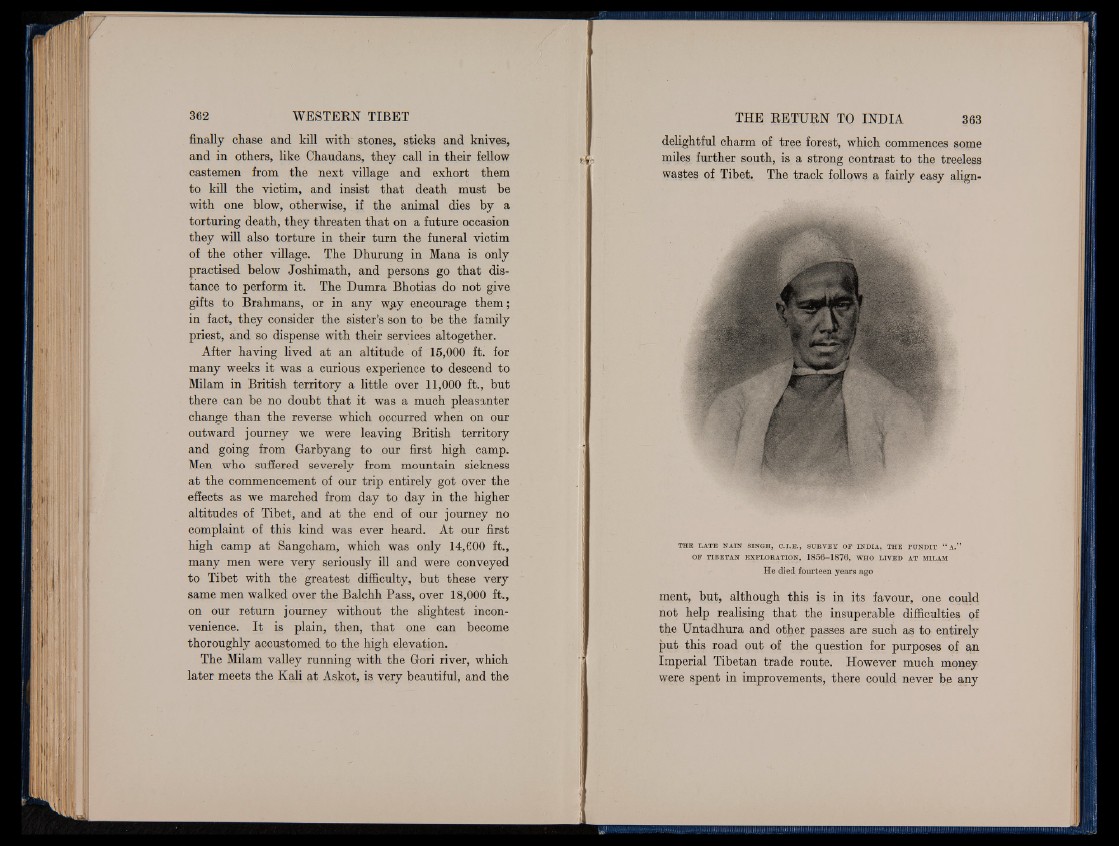
finally chase and kill with stones, sticks and knives,
and in others, like Chaudans, they call in their fellow
castemen from the next village and exhort them
to kill the victim, and insist that death must be
with one blow, otherwise, if the animal dies by a
torturing death, they threaten that on a future occasion
they will also torture in their turn thé funeral victim
of the other village. The Dhurung in Mana is only
practised below Joshimath, and persons go that distance
to perform it. The Dumra Bhotias do not give
gifts to Brahmans, or in any w#y encourage them;
in fact, they consider the sister’s son to be the family
priest, and so dispense with their services altogether.
After having lived at an altitude of 15,000 ft. for
many weeks it was a curious experience to descend to
Milam in British territory a little over 11,000 ft., but
there can be no doubt that it was a much pleasanter
change than the reverse which occurred when on our
outward journey we were leaving British territory
and going from Garbyang to our first high camp.
Men who suffered severely from mountain sickness
at the commencement of our trip entirely got over the
effects as we marched from day to day in the higher
altitudes of Tibet, and at the end of our journey no
complaint of this kind was ever heard. At our first
high camp at Sangcham, which was only 14,600 ft.,
many men were very seriously ill and were conveyed
to Tibet with the greatest difficulty, but these very
same men walked over the Balchh Pass, over 18,000 ft.,
on our return journey without the slightest inconvenience.
I t is plain, then, that one can become
thoroughly accustomed to the high elevation.
The Milam valley running with the Gori river, which
later meets the Kali at Askot, is very beautiful, and the
delightful charm of tree forest, which commences some
miles further south, is a strong contrast to the treeless
wastes of Tibet. The track follows a fairly easy align-
THE LATE NAIN SINGH, O .I .E ., SURVEY OF IND IA , THE PU N D IT “ A .”
OF TIBETAN EXPLORATION, 1856-1876, WHO LIVED AT MILAM
He died fourteen years ago
ment, but, although this is in its favour, one could
not help realising that the insuperable difficulties of
the Untadhura and other passes are such as to entirely
put this road out of the question for purposes of an
Imperial Tibetan trade route. However much money
were spent in improvements, there could never be any